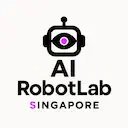Many people want to buy LeRobot 101 in Singapore, but most online listings are unclear. Some shops sell only the motors and controller. Others only sell the 3D printed parts. Many listings leave out the camera entirely. This creates confusion, and buyers often end up with incomplete kits. This guide explains everything you need to know before buying.
1. Know the four versions of LeRobot 101
Before you buy LeRobot Singapore, always confirm which version you are getting. Every seller offers something different.
Full Set (most recommended)
Includes:
- motors
- controller board
- power cables
- screws and hardware
- all 3D printed parts
- complete kit ready to build
Best for beginners and anyone who wants a complete experience without missing items.
Electronics Only (motors and controller)
Includes:
- all motors
- cables
- controller board
- hardware
Does not include the 3D printed parts.
Ideal for buyers who want to print their own parts at home.
3D Printed Parts Only
Includes:
- the full set of printed parts
- zero electronics
Good for makers who want to use their own motors and custom control boards.
Fully Assembled Version
Includes:
- a fully built and tested LeRobot
- ready to use out of the box
Perfect for schools, labs, and companies that want immediate operation.
We carry all four versions locally in Singapore at:
Internal link: airobotlabsg.com/shop
2. Most stores do not include the camera
This is the biggest hidden issue when people try to buy LeRobot 101 online.
Most shops leave out the camera completely.
They sell the robot arm but not the vision hardware it depends on for AI tasks.
Without the camera, the robot can:
- move
- run scripts
- run teleop manually
But it cannot:
- run vision based AI
- learn through demonstration
- perform object based tasks
- use VLA based control
- track anything visually
We make this crystal clear in our Singapore shop.
Every listing shows if the camera is:
- included
- optional
- or not included
This prevents surprises after delivery.
3. Which camera works with LeRobot 101
LeRobot 101 is flexible. It supports a range of cameras because the system expects standard USB video input.
Here are the common compatible options:
1. Logitech C920 or C922
- The most commonly used
- Plug and play
- Good image quality
- Works without special drivers
- Affordable
This is the standard for most LeRobot users worldwide.
2. Any USB Webcam (1080p or better)
Most webcams that follow UVC standards work fine.
Examples:
- Razer Kiyo
- NexiGo webcams
- Anker webcams
3. Raspberry Pi Camera (via Pi or USB adapters)
Used by makers and researchers who want modular setups.
4. Depth cameras (optional)
Not required, but useful for advanced users:
- Intel RealSense
- Luxonis OAK-D
LeRobot 101 does not require depth cameras to work.
A normal webcam is enough.
Our recommendation
Use a Logitech C920 if you want reliability, simplicity, and wide compatibility.
That is why we stock it in Singapore.
4. Camera versions we offer in Singapore
At AI RobotLab Singapore, we offer:
- full LeRobot kits with camera included
- full kits without camera (cheaper for users who already own one)
- cameras sold separately
- camera mounts
- camera cables
- fully assembled systems with camera installed and calibrated
Everything is available right here:
Internal link: airobotlabsg.com/shop
5. Which version should you buy
Beginners
Buy the Full Set with camera.
Schools and labs
Buy the Fully Assembled Version with camera.
Makers with a 3D printer
Buy Electronics Only, then print the parts yourself.
Users with spare webcams
Buy the Full Set without camera, then add your own webcam.
We keep all configurations in Singapore so you do not need to guess or import uncertain parts.
Links
AI Robot Lab Singapore Webshop
Outbound link: https://huggingface.co/docs/lerobot/en/so101
